
Remember back in the day when you read newspapers, you come across the Sunday comics? Of those comics, you may be familiar with Peanuts, consisting of iconic characters such as Snoopy and Charlie Brown. It all started back on October 2, 1950, where three kids, Charlie Brown, Patty, and Shermy, appeared on the funny pages of seven newspapers. All of this is made possible by the creator, Charles M. Schultz.
Schultz is first nicknamed “Sparky,” named after the horse Spark Plug from the comic strip, Barney Google. As a child, he and his father spent time reading funny strips such as Skippy, Mickey Mouse, and Popeye. It is when he saw a drawing of Spike in the 1937 publication of Ripley’s Believe it or Not newspaper feature that inspired him to become a cartoonist.
Although Shultz focused on his artistic style throughout the development of comic art from the late 1920s to the 1940s, Shultz temporarily switched gears to an army career at Camp Campbell, Kentucky, after his beloved mother passed away in 1943. Despite experiencing trauma from his experiences in the army, he returned from the war in the fall of 1945 to focus on becoming a professional cartoonist. Working at Art Instruction, his alma mater, he illustrated Li’l Folks published in the local St. Paul Pioneer Press. The comic’s artistic style involves children with large heads exaggerating words and actions that adults would normally react to. It wasn’t until the first published Peanuts strip that would transform Shultz’s dream as a cartoonist into a global legacy that people recognize and love.
Charlie Brown did not first appear on the first Peanuts comic on October 2, 1950, but first appeared on a Li’l Folks comic strip at least more than a year prior. As one of the first main characters in the Peanuts gang, Charlie Brown is characterized as a loyal friend dedicated to playing baseball and taking good care of his dog, Snoopy. In the 1960s, his personality traits became more defined, including insecurity and having perseverance when it comes to immeasurable defeat. He is also known to have a crush on the little red-haired girl, who never made physical appearances in the comics.
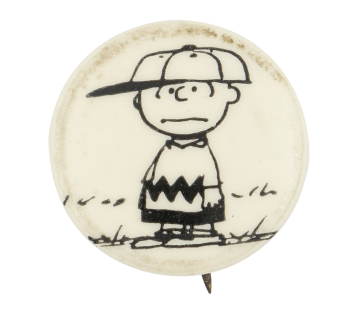
Catalog ID: EN0538

Catalog ID: EN0534
Schroeder first appeared in Peanuts in 1951. He is first depicted as a toddler but quickly aged. Known as a moody musical genius, he is often known for playing a toy piano. While he enjoys playing Beethoven sonatas on the piano, he is also the catcher for Charlie Brown’s baseball team and appears to be Lucy’s biggest fan.
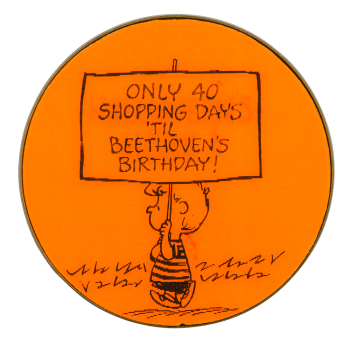
Catalog ID: EN0289
Perhaps the most iconic character created by Schultz and in the Peanuts gang is Snoopy, Charlie Brown’s dog who is passionate about imagination. Snoopy may have also first appeared in a Li’l Folks comic strip alongside Charlie Brown and is first depicted as a puppy. In his early appearances, Snoopy acts like a normal dog that walked on four legs. But in the 1950s and early 1960s, he developed into an enthusiastic character with humanistic thinking and a big heart of imagination. His most notable persona is the Flying Ace, as he heroically battles the Red Baron. In addition to imagination, he is also an aspiring
writer trying to compose the Great American Novel. Schultz stated that Snoopy has the slowest development out of all the characters, but the moment he began to walk on two feet is what led him to become the main character in the Peanuts gang.
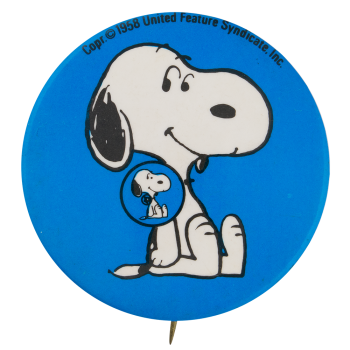
Catalog ID: SR0043
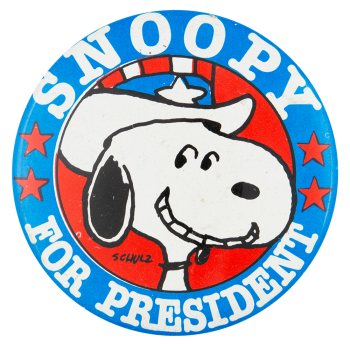
Catalog ID: EN0540
Lucy was added in 1952, appearing as a toddler with round, doll-like eyes. She is later redesigned to have half-circles on the sides of her eyes with the suggestion of an editor. Although Lucy is often characterized as bossy, she sells advice using a “psychiatric” booth for a nickel and takes care of her brothers, Linus and Rerun. She has confidence in becoming a great queen or a president. But her biggest weakness is sticking with Schroeder.
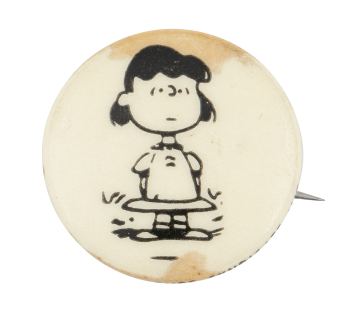
Catalog ID: EN0536
Lucy’s brother, Linus, also made his first appearance on Peanuts as a toddler. A close friend of Charlie Brown, Linus is thoughtful and respectful and serves as the voice of reason among his friends. Linus is best recognized for holding his blanket. He’s also a big believer that the Great Pumpkin will appear on Halloween.
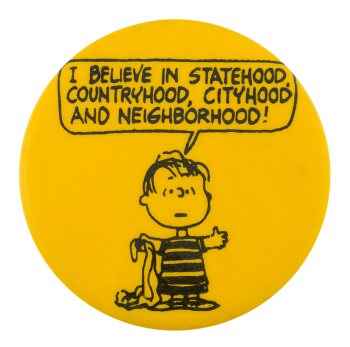
Catalog ID: CA0389
Although he doesn’t appear a lot in the Peanuts comic strips, Pigpen appears to be popular among fans. Often seen in a dust cloud, Pigpen is confident and respects others well. The way his dirtiness is portrayed has greatly evolved, even to the point where Pigpen considers in pride that he is cloaked in the “dust of countless ages.” Sally also made her first appearance in 1959 as a toddler. Sally is curious about everything, and whether she can’t find answers to a question, she develops philosophies such as “Who cares?” “Life goes on,” and “How should I know?” She also sets her heart on Linus, who she called “Sweet Babboo.” And she would always turn to Charlie Brown, her older brother, for his help. Inspired by a dish of candy, Schultz came up with the name of Peppermint Patty, who joined the gang in 1966. Even though her real name is Patricia Reichardt, fans are likely to recognize her as Peppermint Patty. Born to be an athlete, Peppermint Patty is also a thinker who often sits at the “thinking tree” thinking about life and love. She’s also sensitive and gets very unhappy against any unfair treatment. Marcie first appeared in 1971 and is named after Schultz’s friend of his two youngest daughters. Marcie enjoys school, reading, and nature hikes, and often dubs Peppermint Patty, “Sir,” and Charlie Brown, “Charles.” Franklin was added to the Peanuts gang in 1968 after Los Angeles schoolteacher Harriet Glickman suggested a character of a different race appearing in a popular comic strip like Peanuts. Although Franklin is a busy kid, he is always willing to help his friends. He also goes to school with Peppermint Patty, plays on the neighborhood baseball team, and shares stories about his grandfather with Charlie Brown.
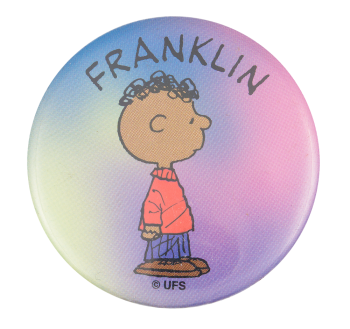
Catalog ID: EN0445
Woodstock, who serves as a great pal to Snoopy, first appeared in 1967. It wasn’t until 1970 when Schultz gave the name of Woodstock after attending the summer music festival. Another fan favorite, Woodstock is a bird who often hangs out with Snoopy. Some of his adventures include camping with the Beagle Scouts.
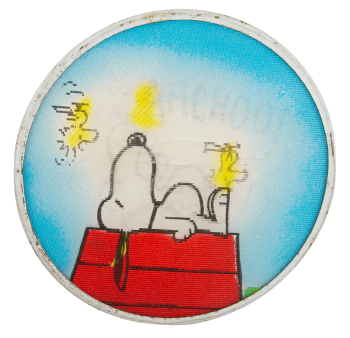
Catalog ID: EN0546
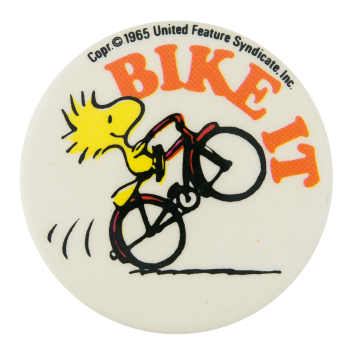
Catalog ID: EN0083
As Peanuts evolved, its merchandise also evolved. From toys to products, the Peanuts merchandise became popular collectibles. This is especially for Snoopy, with his various personas becoming lovable
items such as plush dolls. This collection of buttons featuring Snoopy can serve as a great example of representing merchandise.
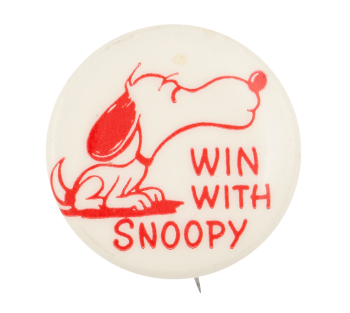
Catalog ID: EN0552
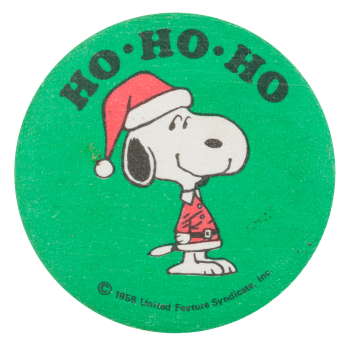
Catalog ID: EN0511
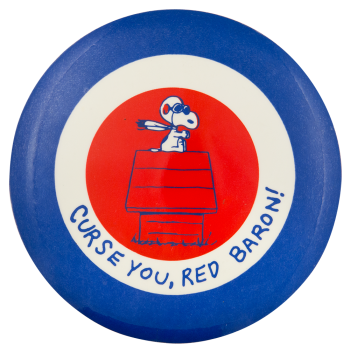
Catalog ID: EN0455
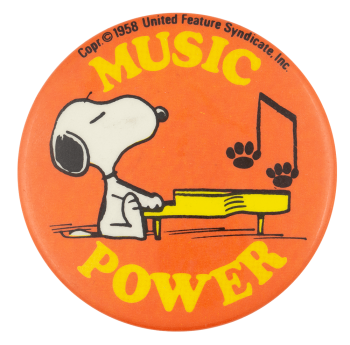
Catalog ID: EN0544
Peanuts is one of the most recognizable comic strips in the world. Today, it is featured in thousands of newspapers as well as appearing on television specials, feature films, books, promotions, and even theatrical productions. Charles Schultz’s legendary work will continue to be loved by families worldwide, and it will carry on for years to come.
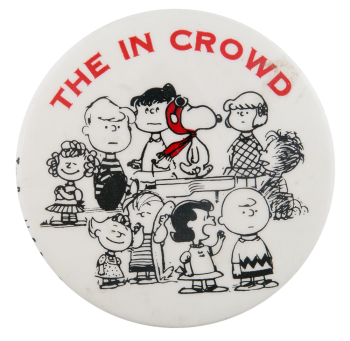
Catalog ID: EN0050
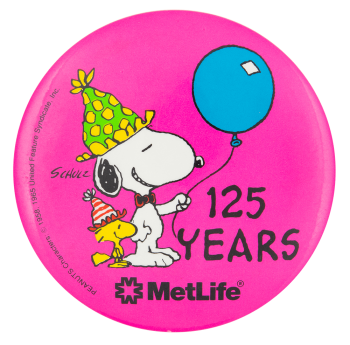
Catalog ID: EV0782
All buttons courtesy of the Busy Beaver Button Museum. Check out the entire collection of Schultz buttons.
Resources:
Charles M. Schultz Museum. (n.d.). 70 years of Peanuts. Retrieved July 22, 2021, from
https://schulzmuseum.org/70-years-of-peanuts-online/
Charles M. Schultz Museum. (n.d.). About Charles M. Schultz. Retrieved July 22, 2021, from
https://schulzmuseum.org/about-schulz/
Charles M. Schultz Museum. (n.d.). Charles M. Schultz biography. Retrieved July 22, 2021, from
https://schulzmuseum.org/about-schulz/schulz-biography/
Peanuts. (n.d.). About Peanuts. Retrieved July 22, 2021, from https://www.peanuts.com/about-peanuts
Peanuts. (n.d.). Charlie Brown. Retrieved July 22, 2021, from https://www.peanuts.com/about/charlie-
brown
Peanuts. (n.d.). Franklin. Retrieved July 22, 2021, from https://www.peanuts.com/about/franklin
Peanuts. (n.d.). Linus. Retrieved July 22, 2021, from https://www.peanuts.com/about/linus
Peanuts. (n.d.). Lucy. Retrieved July 22, 2021, from https://www.peanuts.com/about/lucy
Peanuts. (n.d.). Marcie. Retrieved July 22, 2021, from https://www.peanuts.com/about/marcie
Peanuts. (n.d.). Peppermint Patty. Retrieved July 22, 2021, from
https://www.peanuts.com/about/peppermint-patty
Peanuts. (n.d.). Pigpen. Retrieved July 22, 2021, from https://www.peanuts.com/about/pigpen
Peanuts. (n.d.). Sally. Retrieved July 22, 2021, from https://www.peanuts.com/about/sally
Peanuts. (n.d.). Schroeder. Retrieved July 22, 2021, from https://www.peanuts.com/about/schroeder
Peanuts. (n.d.). Snoopy. Retrieved July 22, 2021, from https://www.peanuts.com/about/snoopy
Peanuts. (n.d.). Woodstock. Retrieved July 22, 2021, from https://www.peanuts.com/about/woodstock
